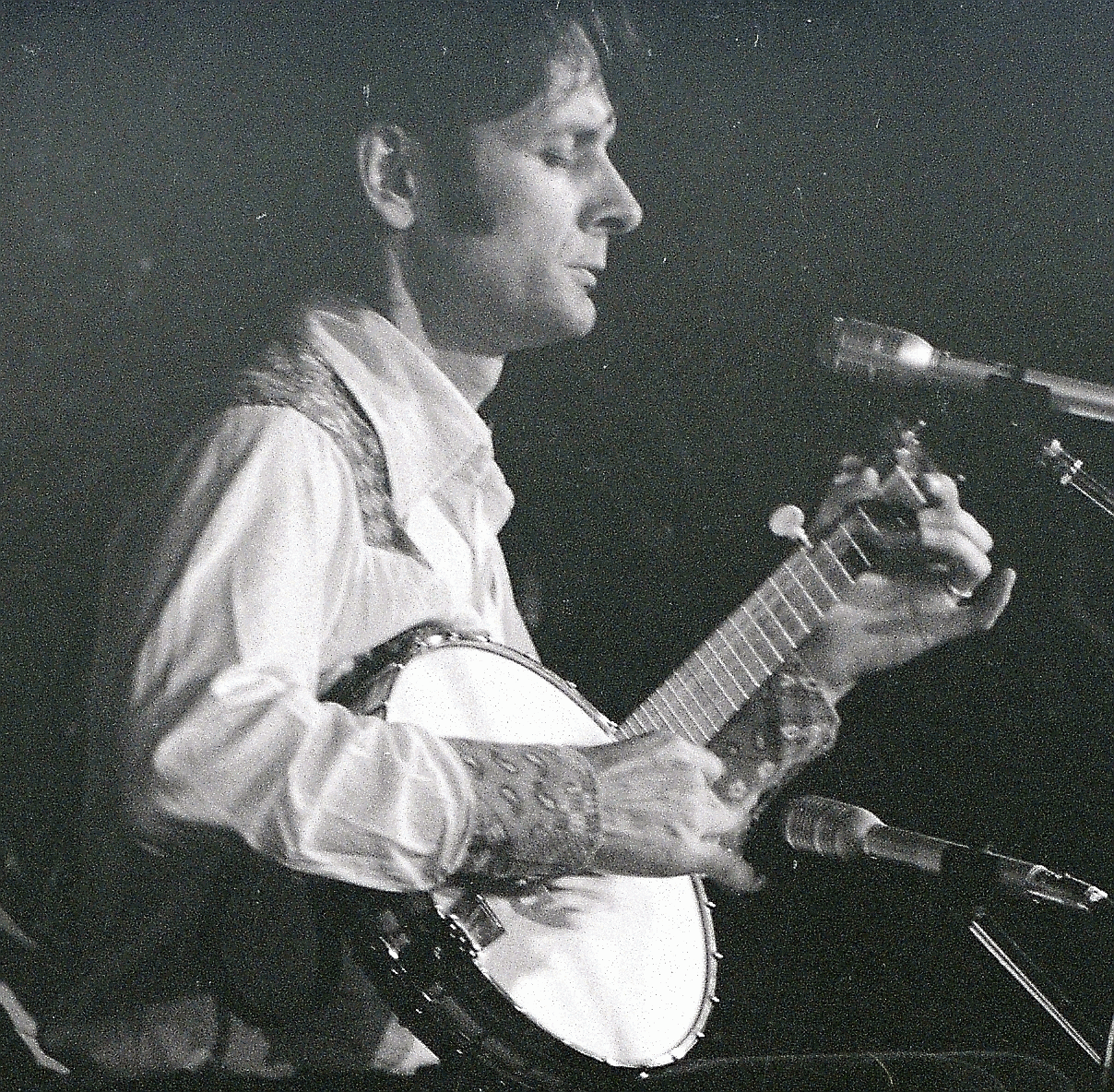
by Mark Greenberg
 |
A Tribute to Mike
Seeger by Mark Greenberg |
| photo: M. Greenberg © 1978 |
Walk around downtown Montpelier, VT on a rainless day, and you might come across street musicians playing Southern old-time music on fiddles and banjos. These are not old-timers playing the music of their youth, but young musicians, some adorned with body art and baubles, generations removed from the music they play with such vigor, commitment, and, sometimes, a touch of recklessness. You can also often hear young people playing this music at local farmers’ markets and at some of the coffee houses, bars, and other venues that help to make the local music scene so lively and diverse. In central Vermont, at least, old-time music is the new bluegrass.
Whether they know it or not, those folks probably wouldn’t be playing “Old Molly Hare” and “Cumberland Gap” if it weren’t for musician, producer, and champion of a wide range of old-time American music, Mike Seeger. Mike Seeger died on Friday, August 7, following a long battle with cancer, at his home in Virginia. He was 75.
Like his older half-brother, Pete, Mike was a planter of musical seeds. Perhaps more than any other single individual, he is responsible for the revival of interest in, love of, and desire to play music that had blossomed in the 19th and early 20th centuries in remote, often bare-bones communities throughout the Southern Appalachians, largely before mass culture reached the mountains via radio and recordings.
Mike played and sang this music with skill, grace, and devotion. The result was both proper and funky – and highly infectious.
Raised on Library of Congress field recordings in a family that took a dim view of popular, commercial music, Mike began developing his love of traditional music as a child. (His mother refused to buy Mike a steel-stringed guitar as soon as the salesman mentioned that the then-popular folk song singer Burl Ives played one, causing Mike to make his first foray into bluegrass playing a classical, nylon-string guitar).
Eventually, Mike transcended this parochial approach and became a traditionalist who recognized and embraced the changes that helped to perpetuate old music, not simply because it was old, but because it was vital. Mike not only introduced folks to Charlie Poole and Tommy Jarrel but also to George Jones and Loretta Lynn. He joined David Grisman and John Hartford for “Retro Grass,” playing bluegrass standards the old-timey way. He recorded with Ry Cooder and many others. He became an avid flat-foot dancer. He attended a world-wide jaw harp convention in Siberia. Musically, he never stopped growing, both forwards and backwards.
Mike did all this on an ever-growing array of instruments. The first was the fiddle, once the basic American folk instrument but in the early days of the Folk Revival virtually invisible. That changed in 1958, when Mike, John Cohen, and Tom Paley coalesced, more or less, as the New Lost City Ramblers, leading their early minions back to 1932. The Ramblers differed from the prevailing commercial “folk” trios in a thousand ways, but Mike’s fiddle playing was one of the most symbolic and powerful.
Along with recreating a wide array of Southern music recorded in the 1920s and early ‘30s in authentic vernacular styles, Mike and the Ramblers shared the spotlight with some of the musicians who had inspired them, some of whom they had helped to bring out of obscurity. For Mike, that included left-handed, finger-picking guitarist Elizabeth Cotten and Virginia banjo-playing coal miner Dock Boggs. Cotten, who created the folk classic“Freight Train” when she was 11, had worked as a domestic for the Seeger family before they discovered her talents. Boggs had recorded a handful of eerie, blues-influenced songs in the late 1920s, then disappeared from public view. Mike recorded both musicians for Folkways Records, adding to a production catalogue that included the first anthologies of Scruggs-style banjo playing and of bluegrass.
Mike’s selfless promoting of others’ music helped to educate folks ranging from living room pickers to Bob Dylan and Cooder. His performances, in addition to being entertaining, were veritable lecture-demonstrations with which few classrooms could compete. Far from a pedant, Mike used his dryly humorous song introductions both to relay information and to pique further curiosity. Then he would play. At first, along with the fiddle, it was the banjo, mandolin, guitar, and mouth harp (harmonica). Over time, these were joined by the jaw harp, quills (panpipes), various shakers, his face, and an assortment of banjos reaching back to the gut-string gourd instruments that slaves created based on their African memories.
And Mike always encouraged young people. I was 17 when I first heard the Ramblers and met Mike, and it changed my life. Our paths crossed many times after that, and he always wanted to know what I was up to. He asked me to write the liner notes for the recording of the Ramblers’ 20th anniversary concert at Carnegie Hall and helped me reconvene the semi-retired group to appear at the 1986 Midsummer Festival in Montpelier. Mike was last in central Vermont in 1999 to perform and to meet with my American studies class at Goddard College.
Mike’s death has brought forth a wave of richly-deserved tributes that probably would have both embarrassed and pleased him. He was a highly talented, complex man, who could seem, in the words of a friend, “aloof and diffident,” but who was also self-effacing and a mentor to many, whether directly or through his tireless work on behalf of vernacular music and musicians.
I’m certain that he would have liked Montpelier’s
young old-timers. He might even have danced a few steps to their tunes.
(© 2009. This tribute first appeared in the Barre-Montpelier Times Argus,
8/21/09.)